| View previous topic :: View next topic |
| Author |
Message |
Pete Richards
Site Admin
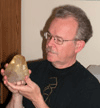
Joined: 29 Dec 2008
Posts: 843
Location: Northeast Ohio



|
 Posted: Jan 13, 2013 13:26 Post subject: Re: About cyclic twinning - (5) Posted: Jan 13, 2013 13:26 Post subject: Re: About cyclic twinning - (5) |
|
|
| Dean Allum wrote: |
Pete,
A cyclic twin with a hole in the center (similar to the model just shown) could still be consistent with your theory... if the twin was subjected to isotropic etching after formation.
I guess there is also a slight chance that they could be remnants of a sagenite array similar to what you showed earlier.
Are there any real-world examples of a large "donut hole" similar to the model?
-Dean Allum |
I think the origin of cyclic rutile twins from sagenite arrays only makes sense for the six-sided "flat" twins, but not for the eight-sided "zig-zag" twins.
Be that as it may, I would question the "hole". It has limonite or some other matrix material in it, so we can't know whether it is a hole all the way through, or a depression that ends at depth. Both of the zig-zag twins that I own have "dimples" that look like holes, but they pinch out further down in the crystal. Both are kind of conical in side view, and I think they started out as a small closed crystal, but grew primarily around the top, expanding and eventually opening up in the middle. Sort of like some vanadinite and pyromorphite which are cavernous with a hexagonal hole down the middle but not all the way through.
I have personally never seen a zig-zag cyclic twin that is anywhere near as open as the model in these pictures. I think it is an incorrect model for these twins (my opinion, not a known fact).
_________________
Collecting and studying crystals with interesting habits, twinning, and epitaxy |
|
| Back to top |
|
 |
James Catmur
Site Admin

Joined: 14 Sep 2006
Posts: 1463
Location: Cambridge



|
 Posted: Jan 13, 2013 15:20 Post subject: Re: About cyclic twinning - (5) Posted: Jan 13, 2013 15:20 Post subject: Re: About cyclic twinning - (5) |
|
|
Dean
It was in a display case in the museum, so we would need to ask the museum to confirm if that is the case, as I could not really say for certain. It looked to me like it went all the way through to the matrix so was like the model, which was why I was so pleased to see it and add it to this discussion.
Apparently the curator is sick at the moment so I am not sure if they will be able to help or not.
James
|
|
| Back to top |
|
 |
Peter Farquhar
Site Admin

Joined: 14 May 2011
Posts: 52
Location: Virginia



|
 Posted: Jan 31, 2013 18:32 Post subject: Re: About cyclic twinning - (5) Posted: Jan 31, 2013 18:32 Post subject: Re: About cyclic twinning - (5) |
|
|
Thank you all for the recent contributions and interesting photos posted to this thread. It is delightful to see such fine examples of cyclic twinning in rutile and other species. In return, I want to share with you another rutile specimen from a classic locality.
In 1803, Abraham Gottlob Werner created the name “rutile” to describe a mineral from Horcajuelo de la Sierra, Madrid, Spain, which has long been regarded now as the type locality for rutile. Cyclic twinned rutile from Horcajuelo, Spain are uncommon and thus highly prized by collectors. The few specimens I have seen were mostly from old museums.
The rutile crystal from Horcajuelo shown below (PF-3405) is a large, complete sixling (measuring 3.7 cm.) in good condition and on matrix. Please let me know if you have more information about the rutiles of Horcajuelo. Are any rutile collecting sites still active in Horcajuelo?
Peter Farquhar
Claremont, California
USA
| Description: |
Rutile (PF-3405)
Horcajuelo de la Sierra, Madrid, Spain
Overall specimen 6.0 x 5.0 x 3.8 cm.
Large rutile sixling on matrix from Horcajuelo, Spain |
|
| Viewed: |
41611 Time(s) |
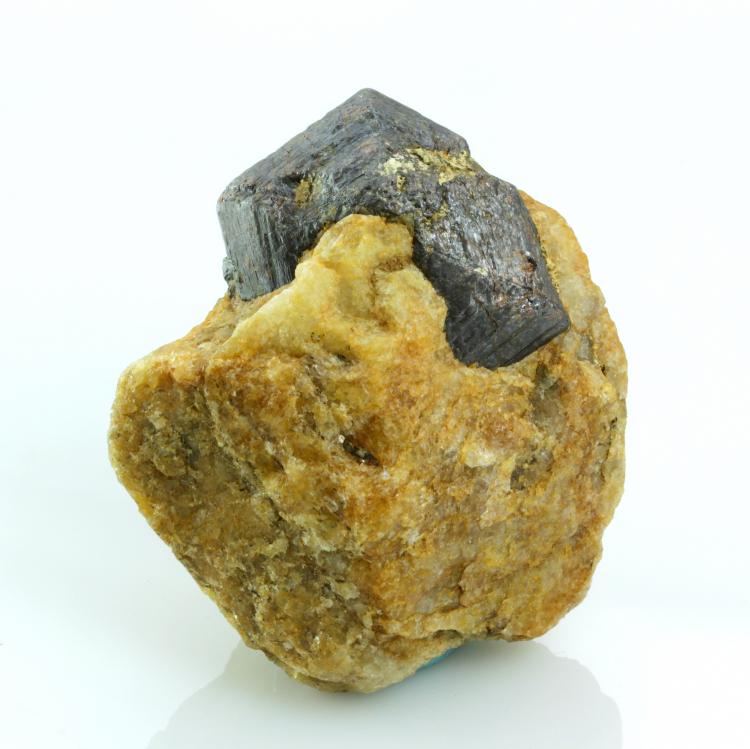
|
|
|
| Back to top |
|
 |
Peter Farquhar
Site Admin

Joined: 14 May 2011
Posts: 52
Location: Virginia



|
 Posted: Feb 18, 2013 18:24 Post subject: Re: About cyclic twinning - (5) Posted: Feb 18, 2013 18:24 Post subject: Re: About cyclic twinning - (5) |
|
|
Is it a hole or a dimple?
Several times in this thread, Pete Richards and others have challenged the accuracy of old crystallographic models showing a hole in the middle of a cyclic twinned rutile (e.g., see James’ recent photo of a Copenhagen museum displaying a zig-zag donut-shaped wooden model next to a rutile eightling from Magnet Cove, Arkansas).
It's a fascinating question, "Do real cyclic twinned rutile specimens exist with a hole completely through center of the crystal (rather than a dimple that ends at depth)?" So far, we’ve seen all dimples and no holes.
The following contribution to this ongoing discussion is a sharp rutile eightling (PF-2130) on matrix from the Parkesburg area in Pennsylvania. While the Parkesburg area is famous for its cyclic twinned rutile specimens (particularly sixlings), rutile eightlings from this locale are relatively rare.
The first photo below illustrates the unusually wide diameter of the central depression in this Parkesburg rutile eightling (in contrast to the rutile eightlings from Magnet Cove and elsewhere).
The top-down view in the second photo uses an LED light to illuminate the progressive narrowing of the central depression in a series of octagonal steps. The small black hole remaining in the center of the depression, however, appears to extend completely through the rutile crystal to the matrix below -- as measured by the depth of the hole and the thickness of the crystal. Nevertheless, we cannot be absolutely certain without removing the matrix to see if the hole goes entirely through the rutile crystal.
So is it a hole or a dimple?
Peter Farquhar
Claremont, California
USA
| Description: |
Rutile eightling (PF-2130)
Parkesburg area, Chester County, Pennsylvania, USA
Approx 2 x 2 x 2 cm
Sharp rutile eightlings are rare from Parkesburg. Formerly in Arthur Montgomery's collection. |
|
| Viewed: |
41464 Time(s) |
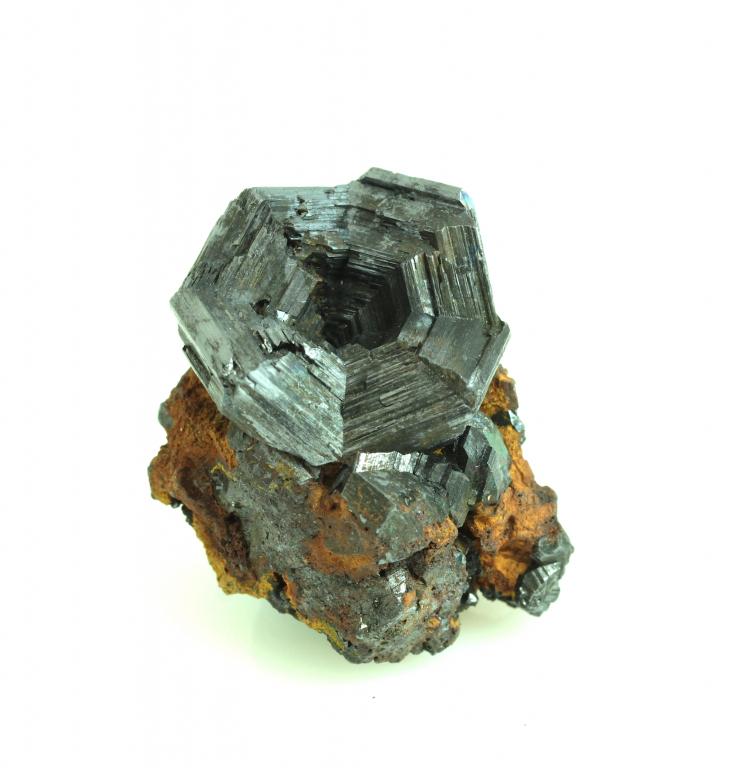
|
| Description: |
Rutile eightling (PF-2130) top view
Parkesburg area, Chester County, Pennsylvania, USA
Approx 2 x 2 x 2 cm
Top-down view of central depression shows a hole that appears to extend completely through the crystal to the matrix below. |
|
| Viewed: |
41433 Time(s) |
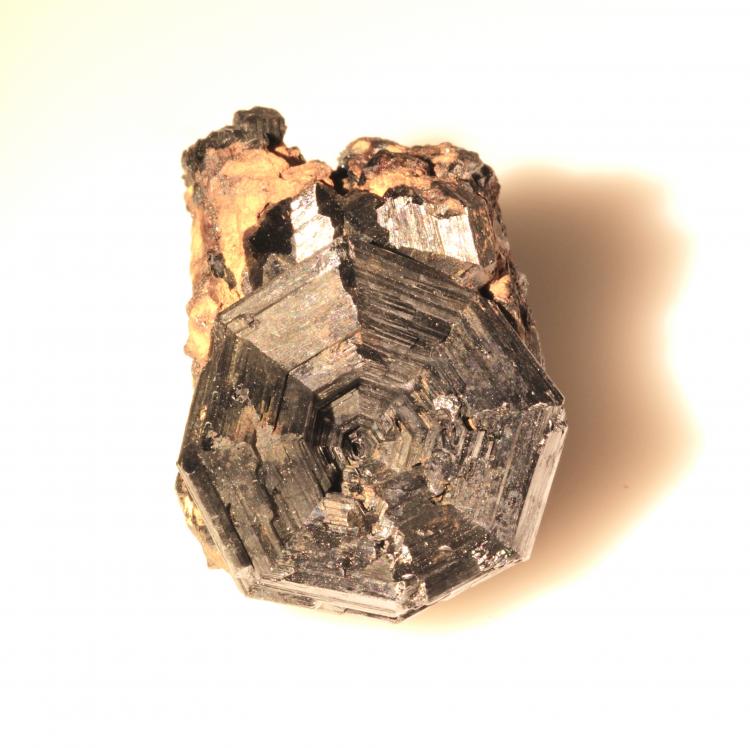
|
|
|
| Back to top |
|
 |
Peter Farquhar
Site Admin

Joined: 14 May 2011
Posts: 52
Location: Virginia



|
 Posted: Mar 03, 2013 17:53 Post subject: Re: About cyclic twinning - (5) Posted: Mar 03, 2013 17:53 Post subject: Re: About cyclic twinning - (5) |
|
|
| Still hoping for feedback on the Parkesburg rutile eighting posted two weeks ago and more discussion about how such cyclic twinned crystals might grow. I appreciate your help.
|
|
| Back to top |
|
 |
prcantos
Site Admin
Joined: 17 Apr 2012
Posts: 243
Location: Granada (Spain)



|
 Posted: Mar 07, 2013 08:42 Post subject: Re: About cyclic twinning - (5) Posted: Mar 07, 2013 08:42 Post subject: Re: About cyclic twinning - (5) |
|
|
Hi, Peter and everybody. I will be finishing the publication of the translation of this great thread in Spanish-side FMF Forum soon, because of its obvious interest and excellence. May be some Spanish-speakers FMF members add some more information about these topics. I would translate such contributions into English and publish them here in that case.
Regards from Spain.
_________________
Pablo Rodríguez Cantos
Λίθον˛ον απεδοκίμασαν˛οι οικοδομουντες |
|
| Back to top |
|
 |
Peter Farquhar
Site Admin

Joined: 14 May 2011
Posts: 52
Location: Virginia



|
 Posted: Mar 29, 2013 17:06 Post subject: Re: About cyclic twinning - (5) Posted: Mar 29, 2013 17:06 Post subject: Re: About cyclic twinning - (5) |
|
|
Years ago I worked in Pittsburgh, Pennsylvania, and would often spend my lunchtime visiting the mineral collection at the nearby Carnegie Museum of Natural History. One of my favorite rutile specimens is this extraordinary sixling from Parkesburg (CM21515). Indeed, the many hours I spent spellbound by this specimen led directly to my interest in collecting rutile.
I understand the Carnegie Museum purchased this Parkesburg rutile in 1987; it was formerly in the collection of E. Mitchell Gunnell, who had acquired it from David Seaman in 1949. The specimen is believed to have originated from the William W. Jefferis collection. Andrew Carnegie purchased Jefferis’ entire collection of over 14,000 specimens and donated them to the Carnegie Museum of Natural History in 1905. It is nice to see this specimen may be back home again.
Visitors to the Carnegie Museum will enjoy the outstanding display assembled by Marc and Deb Wilson on twinning in minerals. This Parkesburg rutile is used to illustrate cyclic twinning in the display, though few people realize the intriguing history behind this amazing specimen.
Peter Farquhar
Claremont, California
USA
| Description: |
Rutile sixling (CM21515)
Parkesburg, Pennsylvania, USA
6.5 x 5.5 x 3.0 cm
My photo is published with permission of the Carnegie Museum of Natural History. All rights reserved. |
|
| Viewed: |
40935 Time(s) |
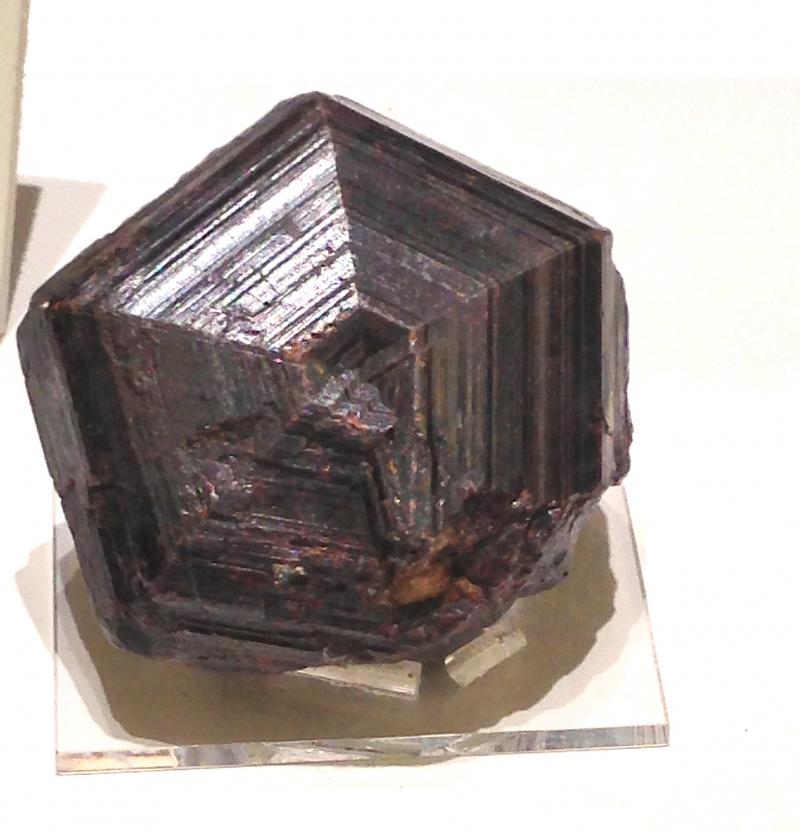
|
|
|
| Back to top |
|
 |
Duncan Miller

Joined: 25 Apr 2009
Posts: 138
Location: South Africa



|
 Posted: Apr 01, 2013 05:06 Post subject: Re: About cyclic twinning - (5) Posted: Apr 01, 2013 05:06 Post subject: Re: About cyclic twinning - (5) |
|
|
Recently, another two adularia cyclic twins were recovered by Marion Coleman from a hydrothermal vein in the Vredendal Limestone Quarry, South Africa. Both are 55 x 55 mm, so a bit smaller than the one found several years ago by Lesley Bust, illustrated on page 4 of this thread, with an analysis of the twinning. Marion's specimens are decorated with quartz and one has an accessory dolomite crystal, making them very aesthetic specimens. (For those in South Africa, please note that the Vredendal Limestone Quarry is a closed collecting site that may be visited only on the annual field trips organised by the Cape Town Gem & Mineral Club: https://ctminsoc.org.za/ )
Duncan Miller
Cape Town
| Description: |
Adularia - K-feldspar with quartz and dolomite
Vredendal Limestone Quarry, South Africa
55 x 55 mm |
|
| Viewed: |
40413 Time(s) |
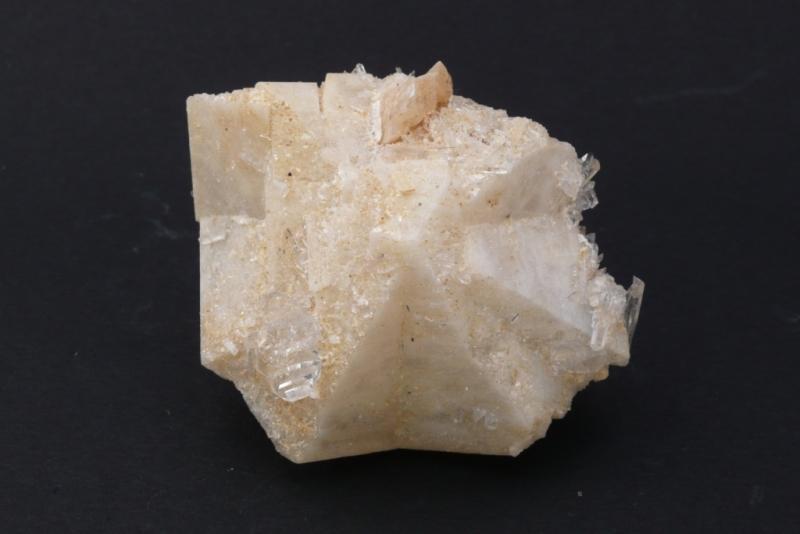
|
| Description: |
Adularia - K-feldspar with quartz
Vredendal Limestone Quarry, South Africa
55 x 55 mm |
|
| Viewed: |
40417 Time(s) |
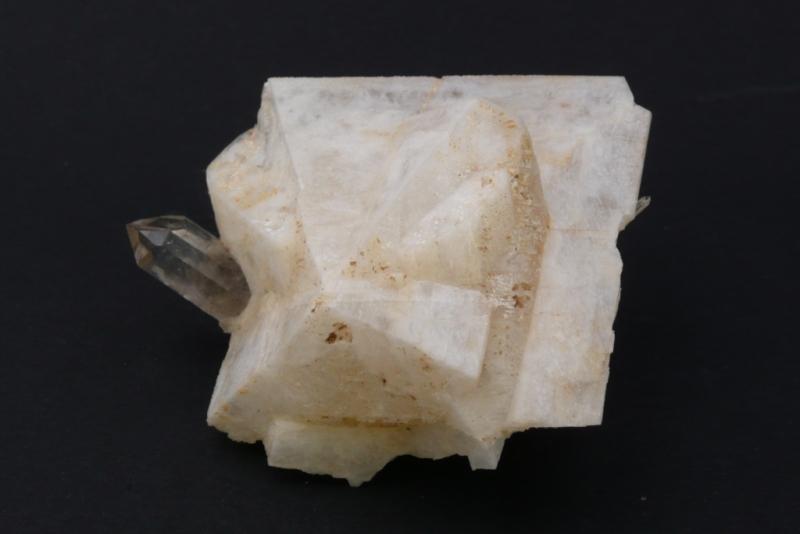
|
|
|
| Back to top |
|
 |
Peter Farquhar
Site Admin

Joined: 14 May 2011
Posts: 52
Location: Virginia



|
 Posted: Apr 19, 2013 18:35 Post subject: Re: About cyclic twinning - (5) Posted: Apr 19, 2013 18:35 Post subject: Re: About cyclic twinning - (5) |
|
|
My thanks to Duncan for posting the extraordinary photos of cyclic twinned adularia. They are really fine specimens. How many such specimens have been recovered from the Vredendal Limestone Quarry in South Africa?
Continuing the series of great cyclic twin rutile specimens, this post shows a well-known Parkesburg Pennsylvania sixling from the Harvard Mineralogical Museum (#110229).
At 4cm across, the Harvard specimen is about two-thirds the size of the rutile sixling from the Carnegie Museum (CM21515) posted earlier. Both Parkesburg specimens are very attractive with this quality and completeness, and thus quite rare from this locality.
Peter Farquhar
Claremont, California USA
| Description: |
Rutile sixling (Harvard-110229)
Parkesburg, Sadsbury Township, Chester County, Pennsylvania USA
4cm across
Photo by Peter Cristofono is copyrighted 2012, and used with his permission. Also appears on Mindat as photo 470775. |
|
| Viewed: |
40372 Time(s) |
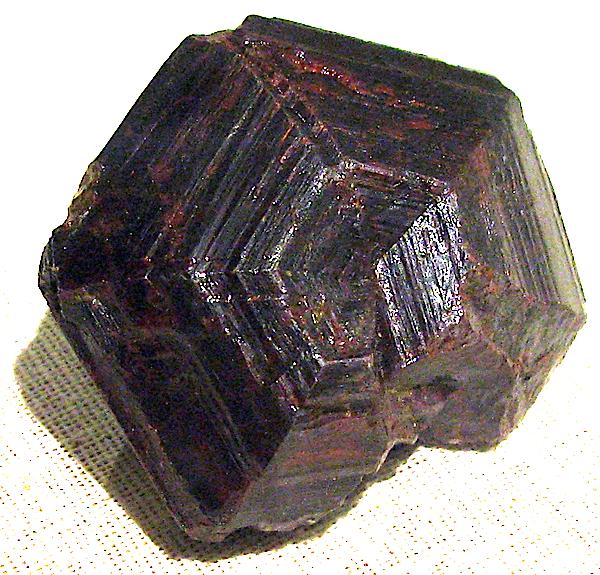
|
|
|
| Back to top |
|
 |
Duncan Miller

Joined: 25 Apr 2009
Posts: 138
Location: South Africa



|
 Posted: Apr 20, 2013 00:49 Post subject: Re: About cyclic twinning - (5) Posted: Apr 20, 2013 00:49 Post subject: Re: About cyclic twinning - (5) |
|
|
| RutileFox wrote: | | My thanks to Duncan for posting the extraordinary photos of cyclic twinned adularia. They are really fine specimens. How many such specimens have been recovered from the Vredendal Limestone Quarry in South Africa? |
To my knowledge only four of the palm-sized cyclic adularia twins have been found, over a period of fifteen years, all from a pair of hydrothermal veins exposed in one quarry wall. Numerous smaller partial cyclic twins and even more numerous simple twins have been found over the years. These hydrothermal veins also produce very attractive specimens of quartz with included and projecting rutile needles, as well as smallish dolomite crystals and the occasional rosette of calcite. Many of the feldspars are very corroded and evidently there were several hydrothermal episodes. A description of the quarry is available here: https://www.mineral-forum.com/message-board/viewtopic.php?p=13335#13335
Duncan
|
|
| Back to top |
|
 |
Peter Farquhar
Site Admin

Joined: 14 May 2011
Posts: 52
Location: Virginia



|
 Posted: Apr 21, 2013 17:02 Post subject: Re: About cyclic twinning - (5) Posted: Apr 21, 2013 17:02 Post subject: Re: About cyclic twinning - (5) |
|
|
| prcantos wrote: | Hi, Peter and everybody. I will be finishing the publication of the translation of this great thread in Spanish-side FMF Forum soon, because of its obvious interest and excellence. May be some Spanish-speakers FMF members add some more information about these topics. I would translate such contributions into English and publish them here in that case.
Regards from Spain. |
A big thank you to Pablo Rodriguez Cantos for his generous efforts in translating this thread and posting it on the Spanish-side of the FMF Forum. It is interesting to see how many views have occurred already.
I'm hoping some Spanish viewers will be able to provide further information about the type locality for rutile at Horcajuelo de la Sierra, Spain, or about Salvador Calderon and his mineral collection. The large rutile sixling on matrix from this locality posted earlier is one of my favorites.
Peter Farquhar
Claremont, California
USA
|
|
| Back to top |
|
 |
Miguel Calvo
Joined: 04 Aug 2009
Posts: 6
Location: Zaragoza


|
 Posted: Apr 23, 2013 03:16 Post subject: Re: About cyclic twinning - (5) Posted: Apr 23, 2013 03:16 Post subject: Re: About cyclic twinning - (5) |
|
|
About rutile from Horcajuelo de la Sierra, I have published this informations in the "Oxides" volume (published in 2009) of my book "Minerals and Mines of Spain".
Page 237.
"Rutile was described as a mineral species by Werner in 1803 using specimens whit the purported locality "Cajuelo, Vuitrago, Burgos" . During some period this mineral was called "cajuelite" (Chester 1896), dedicated to its purported type locality. Obviously the real locality for the specimens that Werner studied was Horcajuelo de la Sierra (Madrid), where its existence had been already known as a curiosity since before, but without a scientific definition. Consequently Horcajuelo de la Sierra (Madrid) may be considered as the type locality for this mineral. The reference about Buitrago in the description recalls the historical fact about Buitrago belonging to Dukes of Infantado Señorío de Buitrago up to the abolition of the lordly regime in the 1830s years.
Page 241. Horcajuelo de la Sierra. Spreaded rutile specimens that appeared superficially in the Mata de la Cabezada Hill, in Horcajuelo de la Sierra, had attracted attention of the inhabitants for ages. They called them "acerillos" (i. e. little steel pieces); when they were first observed by XVIII century mineralogists they were identified as "red schorls". Herrgen (1799) copies the analytical data that Klaproth had published in 1797 concerning to rutile from this deposit, one of the first studied deposits for this mineral worldwide, and he points Mata de la Cabezada Hill as the place of origin for these specimens, a quarter league (1.5 Km.) from the village. There were some old mines in these locations, called "Pozos de los Moros" (i. e. "Moors Wells") in the Herrgen times, where silver was probably extracted according to him. Rutile is found in one of the hillsides, the same with the wells, and it appears spreaded on the land from the base up to certain level. Occasionally some specimen may be found nowadays, but of course this is difficult after several centuries of searching.
In this locality rutile are always found as isolated crystals (twins), normally rounded, and occasionally with some pieces of quartz joined to them, but it is not a primary deposit. Single prismatic crystals, which are sharply grooved along the faces of the prism, up to "3.5 inches long x 1.5 inches wide" (Herrgen 1799) have been found. Herrgen (1799) also describes its "constant joining tendency", that is, the existence of twinnings. He notes the existence of up to four members twinnings.
Lévy (1837a) notes the presence of several single and twinned rutile specimens in the H. Heuland's collection from this locality. In addition to single crystals, there are even more frequently some different kinds of twins, the so called "geniculated", or even cyclic twins.
---------
I have serious doubts about if the specimen in the photograph belonged to the Salvador Calderón's collection. Calderón managed many mineral specimens, but I think that he didn't become a "formal collector", though he donated many specimens to some different museums and universities. The specimen in the picture reminds the one draw schematically in the page 279 of his book, which belonged to the Museum of Natural Sciences of Madrid (an is supposed to belong to even today).
_________________
Miguel Calvo |
|
| Back to top |
|
 |
Peter Farquhar
Site Admin

Joined: 14 May 2011
Posts: 52
Location: Virginia



|
 Posted: May 16, 2013 17:49 Post subject: Re: About cyclic twinning - (5) Posted: May 16, 2013 17:49 Post subject: Re: About cyclic twinning - (5) |
|
|
Let me add some new information about the provenance of the cyclic twinned rutile (PF-3405) from Horcajuelo de la Sierra, Madrid, Spain that I posted on January 31, 2013. Miguel Calvo is correct -- this rutile was not associated with Salvador Calderon (1853-1911). Instead, I recently learned this specimen dates to the early 1800s.
Based upon the prior owner’s handwritten notation “Ex Calderon Coll.” on the back of his specimen label (see below), I indicated in my January posting, “This specimen appears to be from the collection of Salvador Calderon …” After Miguel Calvo raised doubts about a Calderon connection, I contacted the British dealer Brian Lloyd of Gregory, Bottley & Lloyd, whose name was also written on the back of the label.
From the two new specimen photos below, Brian immediately recognized the distinctive paper tag on the reverse side of the rutile, “Neeld specimens can be identified by small rectangular labels with copperplate manuscript numbers within a neat black line border.” Joseph Neeld’s (1789-1856) mineral collection remained intact from 1828 until 1974, when Brian purchased the entire collection from the Neeld family.
Gregory, Bottley & Lloyd kindly provided the following images showing Joseph Neeld’s collection catalog and the page that describes this specimen #2110, “A remarkably fine crystal of titane, trigeniculated in quartzous matrix. Spain.” This Horcajuelo rutile thus dates to the period from 1828 to 1830 when Joseph Neeld acquired specimen #2110 for his mineral collection.
But the provenance may not end there. For several reasons, it is possible that Joseph Neeld purchased this Horcajuelo rutile from the prominent British dealer Henry Heuland (1778-1856). We are researching this possibility now to establish whether or not there is a link.
My thanks to Miguel Calvo for raising the questions that prompted this ongoing investigation, and to Brian Lloyd of Gregory, Bottley & Lloyd for his help updating the provenance of this Horcajuelo rutile specimen. I hope to report more about the history of this rutile specimen later.
Peter Farquhar
Claremont, California
USA
| Description: |
|
| Viewed: |
46536 Time(s) |
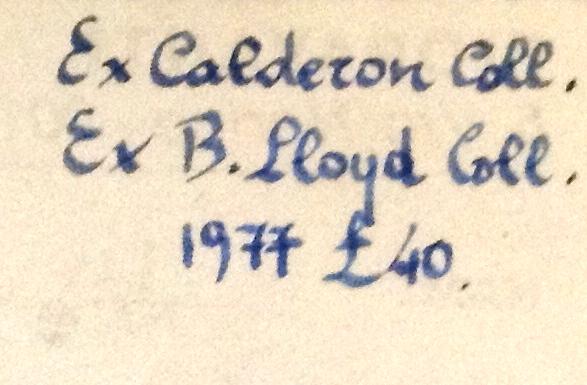
|
| Description: |
Rutile (PF-3405)
Horcajuelo de la Sierra, Madrid, Spain
Overall specimen 6.0 x 5.0 x 3.8cm
Front and back view of a large rutile sixling on matrix from Horcajuelo Spain. |
|
| Viewed: |
46512 Time(s) |
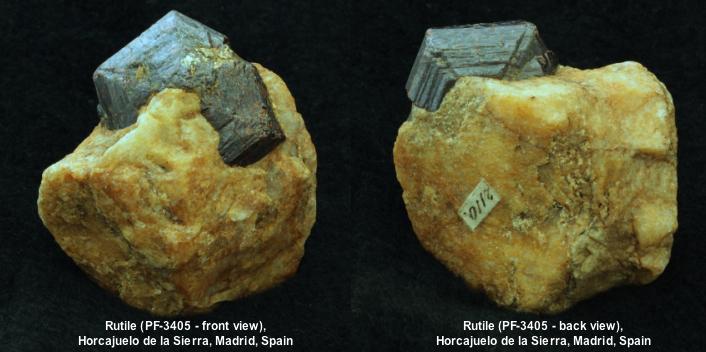
|
| Description: |
Photo is courtesy of Gregory, Bottley & Lloyd, 2013; used with permission.
The cover of Joseph Neeld's mineral collection catalog, which is watermarked 1829, and lists 3632 specimens collected around 1828 to 1830. |
|
| Viewed: |
46489 Time(s) |
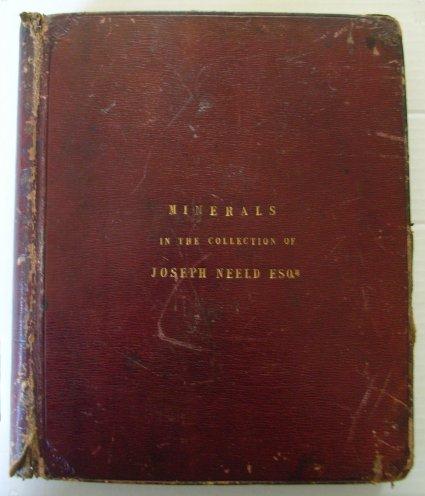
|
| Description: |
Photo is courtesy of Gregory, Bottley &Lloyd, 2013; used with permission.
Specimen #2110 is described as, "A remarkably fine crystal of titane, trigeniculated in quartzous matrix. Spain." |
|
| Viewed: |
46488 Time(s) |
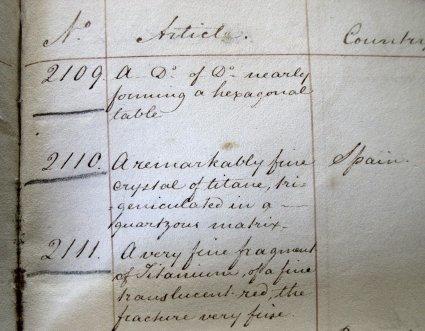
|
|
|
| Back to top |
|
 |
Jordi Fabre
Overall coordinator of the Forum

Joined: 07 Aug 2006
Posts: 5026
Location: Barcelona



|
 Posted: May 17, 2013 01:42 Post subject: Re: About cyclic twinning - (5) Posted: May 17, 2013 01:42 Post subject: Re: About cyclic twinning - (5) |
|
|
| In https://www.mineral-forum.com/message-board/viewtopic.php?p=28180#28180 RutileFox wrote: | ...The rutile crystal from Horcajuelo shown below (PF-3405) is a large, complete sixling (measuring 3.7 cm.) in good condition and on matrix. This specimen appears to be from the collection of Salvador Calderon, the great nineteenth century Spanish naturalist who published the definitive book “Minerals of Spain” in 1910.
Please let me know if you have more information about the rutiles of Horcajuelo or about Salvador Calderon and his collection. Are any rutile collecting sites still active in Horcajuelo?... |
Already corrected, now is:
| wrote: | | ...The rutile crystal from Horcajuelo shown below (PF-3405) is a large, complete sixling (measuring 3.7 cm.) in good condition and on matrix. Please let me know if you have more information about the rutiles of Horcajuelo. Are any rutile collecting sites still active in Horcajuelo?... |
and the image's caption is updated as well.
|
|
| Back to top |
|
 |
Antonio Alcaide
Site Admin

Joined: 23 Aug 2009
Posts: 314
Location: Spain



|
 Posted: May 27, 2013 09:28 Post subject: Re: About cyclic twinning - (5) Posted: May 27, 2013 09:28 Post subject: Re: About cyclic twinning - (5) |
|
|
Thank you very much, Peter, for your efforts and the investigation you are carrying out about that Spanish rutile. Needless to say I have been reading this thread with the maximum interest from its beginning, I have very little to contribute though.
Regards
_________________
Life is the shortest crystal |
|
| Back to top |
|
 |
|





